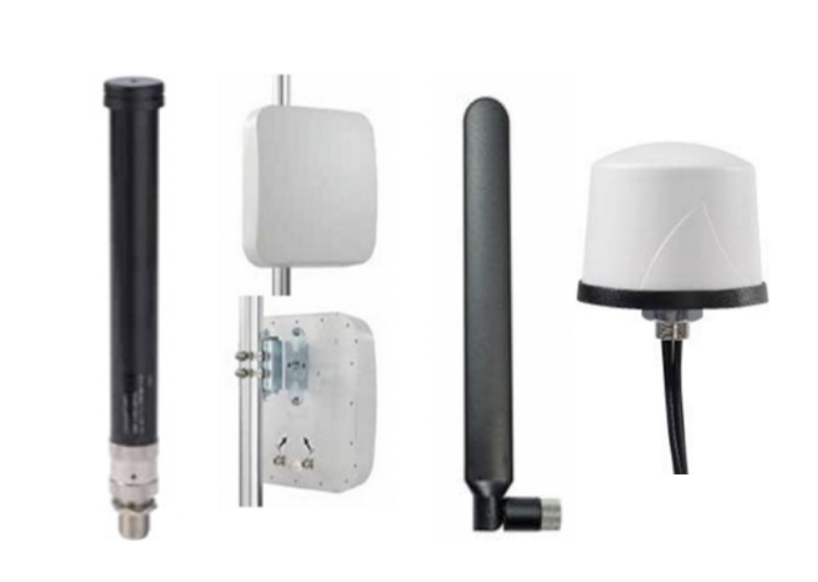Cellular Antennas

RSP Supply carries a full line of cellular antennas designed to enhance signal strength and improve connectivity for reliable, uninterrupted communication. Choose from a wide range of omnidirectional and directional antennas engineered for dependable performance across industrial, commercial, and remote applications. These antennas are ideal for use with routers, boosters, and multiple carrier systems where consistent, high-quality signal transmission is essential.
Directional cellular antennas, often installed on poles or rooftops, focus transmission and reception power across a 180-degree range, providing higher gain and longer range than standard omnidirectional models. Multiple directional antennas can also be stacked vertically to achieve greater coverage without increasing vertical signal distortion. Omnidirectional antennas, on the other hand, broadcast equally in all directions, making them ideal for covering large, open areas or for installations that require connectivity across multiple directions.

More Information about Cellular Antennas
Cellular antennas are vital parts of equipment used to amplify signals for cell towers. When added to equipment that is already placed on or within a cell tower, these antennas help boost weak signals from that tower to a cell phone and vice versa. The cell phone and tower communicate through signals that die out over distance and with obstructions in the way (like buildings) unless they're amplified in some way.
For dependable coverage, cellular antennas can be mounted on poles (usually with a F female connector) or exterior walls of buildings to effectively and efficiently blanket wide locations. Most of these antennas have designs that are not just high gain but also highly directional. This means they acquire signals very well from the specific towers they are pointed at, which makes them good candidates to use in high-reliability scenarios.
FAQs
Q: How does a signal booster system improve a pole-mount cellular antenna’s performance?
A signal booster system amplifies the signal captured by a pole-mounted cellular antenna, strengthening weak signals from distant towers and improving connectivity and reliability.
Q: What is the difference between directional and omnidirectional cellular antennas?
Directional antennas focus their energy in one direction to achieve higher gain and longer range, while omnidirectional antennas distribute the signal evenly in all directions for broad area coverage.
Q: Do cellular antennas work with 4G and 5G networks?
Yes. Most modern cellular antennas are multi-band and designed to operate across 3G, 4G LTE, and 5G frequencies for full compatibility with evolving carrier technologies.
Q: Can cellular antennas also provide Wi-Fi and GPS functionality?
Yes. Some advanced cellular antennas integrate Wi-Fi and GPS capabilities, improving connectivity, positioning, and tracking for emergency services and industrial applications.
Q: Where should cellular antennas be installed for best signal performance?
For optimal results, mount cellular antennas on rooftops, poles, or exterior walls with a clear line of sight to the nearest cell tower, minimizing physical obstructions.
Why Buy Cellular Antennas from RSP Supply
RSP Supply offers a comprehensive selection of high-quality cellular antennas from trusted manufacturers. With fast shipping, competitive pricing, and expert support, we help customers design reliable, high-performance wireless systems for industrial, commercial, and remote operations.

